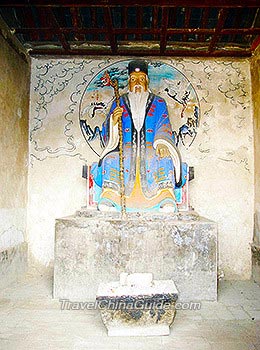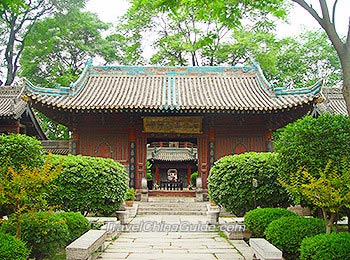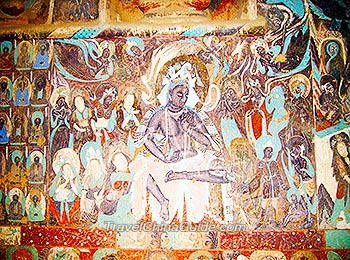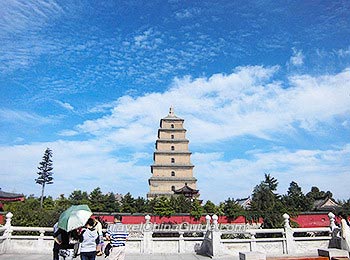 |
Statue of King of
Medicine, Sun Simiao |
In science, the Tang Dynasty (618 - 907) contributed a lot to the development of astronomy, medicine and printing technique in Chinese history. The famous astronomer, Monk Yixing, was the first to successfully measure the length of the meridian line. The well-known King of Medicine, Sun Simiao, wrote a medical book Qianjin Fang (Thousand Golden Prescriptions) which was considered the treasure of traditional Chinese medicine. In 868, the Chinese translation of the Diamond Sutra was printed, nowadays recognized as the earliest engraved printing in the world.
As we all know, the most glorious cultural achievements during this period were the distinguished Tang Poems. A large quantity of excellent poets appeared throughout the whole dynasty. In the early period, there were Chen Zi'ang and the four outstanding poets, namely, Lu Zhaolin, Luo Binwang, Wang Bo and Yang Jiong; in the glorious period, there were more predominant poets, such as Li Bai, Du Fu, Cen Shen and Wang Wei; in the middle period, there were Bai Juyi, Li He and Han Yu; Li Shangyin and Du Mu were representatives of the late Tang Dynasty. Themes of their poems were various, ranging from life at the frontiers, life in the peaceful fields, historic affairs and imaginative fancies. The literary level of Tang Poems reached a peak that had never been surpassed in the history of Chinese literature.
In addition, the form of the ancient novel called 'Chuan Qi' (story) began to take shape during this period. Having a complete story structure and various characters, novels in that period started to reflect social reality. Some representative works were Zhenzhong Ji, Yingying Zhuan and LiwaZhuan. All the novels during this period laid the foundation for the later flourishing development of novels in the Ming (1368 - 1644) and Qing (1644 - 1911) Dynasties.
 |
Xi'an Geat Mosque was
originally built in 742 AD of Tang Dynasty |
Due to the prosperous cultural development in the Tang Dynasty, cultural exchange between China and many foreign countries was frequent. Many overseas students including Japanese and Korean students came to study in the capital Chang'an (currently
Xi'an). Friendly cultural exchange also took place between China and Arabic region. New items, such as emeralds, pepper and Islam were gradually introduced into China. Additionally, it is said that more than 40 percent of mural paintings and sculptures in Mogao Caves were created in the Tang Dynasty.
In the early period, the rulers' policy towards religion was tolerant. There were mainly two traditional religions - Buddhism and Daoism. During the reign of
Emperor Taizong, a famous Buddhist Monk named Xuan Zang went to seek the Buddhist Sutra in India. After enduring an arduous journey, he obtained a total of 657 sutras for which the
Big Wild Goose Pagoda was especially built to preserve. In the process of translating the classical sutras, Buddhist monks in the Tang Dynasty gradually formed a mature system of ideology which contained different sects of Buddhism. Along with the rapidly developed Buddhism, some religions from foreign states, such as Islam and Christianity, were spread to China which enriched Tang's religions. However, in Emperor Wuzong's reign, coercion was reinforced on Buddhism, which caused many sects to disappear except for Zen and a few other remaining sects.
 | | Colorful Mural in Mogao Caves, Dunhuang | |  | | Big Wild Goose Pagoda, Xi'an | |



